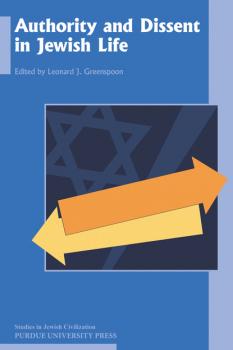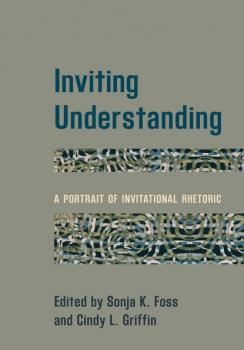Группа авторов
Список книг автора Группа авторовThe Quarantine Review
The second issue of a digital journal created to alleviate the malaise of social distancing with exceptional writing and artwork. The Quarantine Review celebrates literature and art, connecting readers through reflections on the human condition – our lived experiences, afflictions, and dreams. As we face a pandemic with profound implications, the essays within offer a variety of perspectives on the current predicament, encouraging readers to reflect on the world we knew before and contemplate how society can be reshaped once we emerge. Through The Quarantine Review , Dupuis and Sarfraz hope to give voice to the swirling emotions inside each of us during this unprecedented moment, to create a circuit of empathy between the reader, the work itself, and the wider world beyond the walls of our homes. This issue includes writing from Waris Ahluwalia, Catherine Bush, Roseanne Carrara, J.J. Dupuis, Khandijah Kanji, J.J. Martin, C.S. O'Cinneide, Terese Mason Pierre, Teri Vlassopoulos, and artwork by Blaise Moritz.
Holocaust Education
Draws on landmark research with students and teachers in schools conducted over 10 years by the UCL Centre for Holocaust Education.Analyses key challenges for teaching about the Holocaust identified in the research, including use of atrocity images and teaching diverse cultural groups.Offers guidance to teachers to help them address controversy with confidence in the classroom.
Beyond Recidivism
Understanding reentry experiences after incarceration Prison in the United States often has a revolving door, with droves of formerly incarcerated people ultimately finding themselves behind bars again. In Beyond Recidivism , Andrea Leverentz, Elsa Y. Chen, and Johnna Christian bring together a leading group of interdisciplinary scholars to examine this phenomenon using several approaches to research on recently released prisoners returning to their lives. They focus on the social context of reentry and look at the stories returning prisoners tell, including such key issues as when they choose to reveal (or not) their criminal histories. Drawing on contemporary studies, contributors examine the best ideas that have emerged over the last decade to understanding the challenges prisoners face upon reentering society. Together, they present a complete picture of prisoner reentry, including real-world recommendations for policies to ensure the well-being of returning prisoners, regardless of their past mistakes.
Scents and Flavors
Delectable recipes from the medieval Middle East This popular thirteenth-century Syrian cookbook is an ode to what its anonymous author calls the “greater part of the pleasure of this life,” namely the consumption of food and drink, as well as the fragrances that garnish the meals and the diners who enjoy them.Organized like a meal, Scents and Flavors opens with appetizers and juices and proceeds through main courses, side dishes, and desserts. Apricot beverages, stuffed eggplant, pistachio chicken, coriander stew, melon crepes, and almond pudding are seasoned with nutmeg, rose, cloves, saffron, and the occasional rare ingredient such as ambergris to delight and surprise the banqueter. Bookended by chapters on preparatory perfumes, incenses, medicinal oils, antiperspirant powders, and after-meal hand soaps, this comprehensive culinary journey is a feast for all the senses. With the exception of a few extant Babylonian and Roman texts, cookbooks did not appear on the world literary scene until Arabic speakers began compiling their recipe collections in the tenth century, peaking in popularity in the thirteenth century. Scents and Flavors quickly became a bestseller during this golden age of cookbooks and remains today a delectable read for cultural historians and epicures alike.An English-only edition.
Voices of Latin America
These are uncertain times in Latin America. Popular faith in democracy has been shaken; traditional political parties and institutions are stagnating, and there is a growing right-wing extremism overtaking some governments. Yet, in recent years, autonomous social movements have multiplied and thrived. This book presents voices of these movement protagonists themselves, as they describe the major issues, conflicts, and campaigns for social justice in Latin America today. Latin America Bureau, a London-based, independent organization providing news and analysis on the region, spoke to people from fourteen countries, from Mexico to the Southern Cone. The book captures the voices indigenous activists, fighting oil drilling in their homelands; mothers from favelas seeking justice for their children killed by police; opponents of large-scale mining projects; independent journalists working, at great personal risk, to expose corruption and human rights violations; women and LGBT people confronting violence and discrimination; and students demanding their right to a free, universal and high-quality education system. Though their locations and causes are disparate, these people and their movements share learning and activism, and their cooperation helps to link the movements across national borders. Voices of Latin America is essential reading for students, travelers, journalists—anyone with an interest in social justice movements in Latin America.
The Strange Careers of the Jim Crow North
Did American racism originate in the liberal North? An inquiry into the system of institutionalized racism created by Northern Jim Crow Jim Crow was not a regional sickness, it was a national cancer. Even at the high point of twentieth century liberalism in the North, Jim Crow racism hid in plain sight. Perpetuated by colorblind arguments about “cultures of poverty,” policies focused more on black criminality than black equality. Procedures that diverted resources in education, housing, and jobs away from poor black people turned ghettos and prisons into social pandemics. Americans in the North made this history. They tried to unmake it, too. Liberalism, rather than lighting the way to vanquish the darkness of the Jim Crow North gave racism new and complex places to hide. The twelve original essays in this anthology unveil Jim Crow’s many strange careers in the North. They accomplish two goals: first, they show how the Jim Crow North worked as a system to maintain social, economic, and political inequality in the nation’s most liberal places; and second, they chronicle how activists worked to undo the legal, economic, and social inequities born of Northern Jim Crow policies, practices, and ideas. The book ultimately dispels the myth that the South was the birthplace of American racism, and presents a compelling argument that American racism actually originated in the North.
The Grammar of Grace
This anthology is a collection of readings on the Christian life. They were carefully selected from every era of history and from across the spectrum of Christian traditions. They include letters, sermons, treatises and disputations, poems, songs and hymns, confessions, biblical commentary, and even part of a novel. In each case, the subject is life with God, life in God, life for God–life infused and enlivened by God's grace.
The editors introduce each selection, highlighting relevant aspects of the author's biography, spirituality, and historical context. Introductions are also provided for the major eras of the church which present theological, historical, and cultural perspectives to help the reader best engage the selections.
For individuals and groups, classrooms and seminars, this collection will generate dialogue between past and present, and between traditions familiar and unfamiliar. It is not merely a book on the Christian life but for the Christian life, making yesterday's witness to life with God a resource for the Church today.









